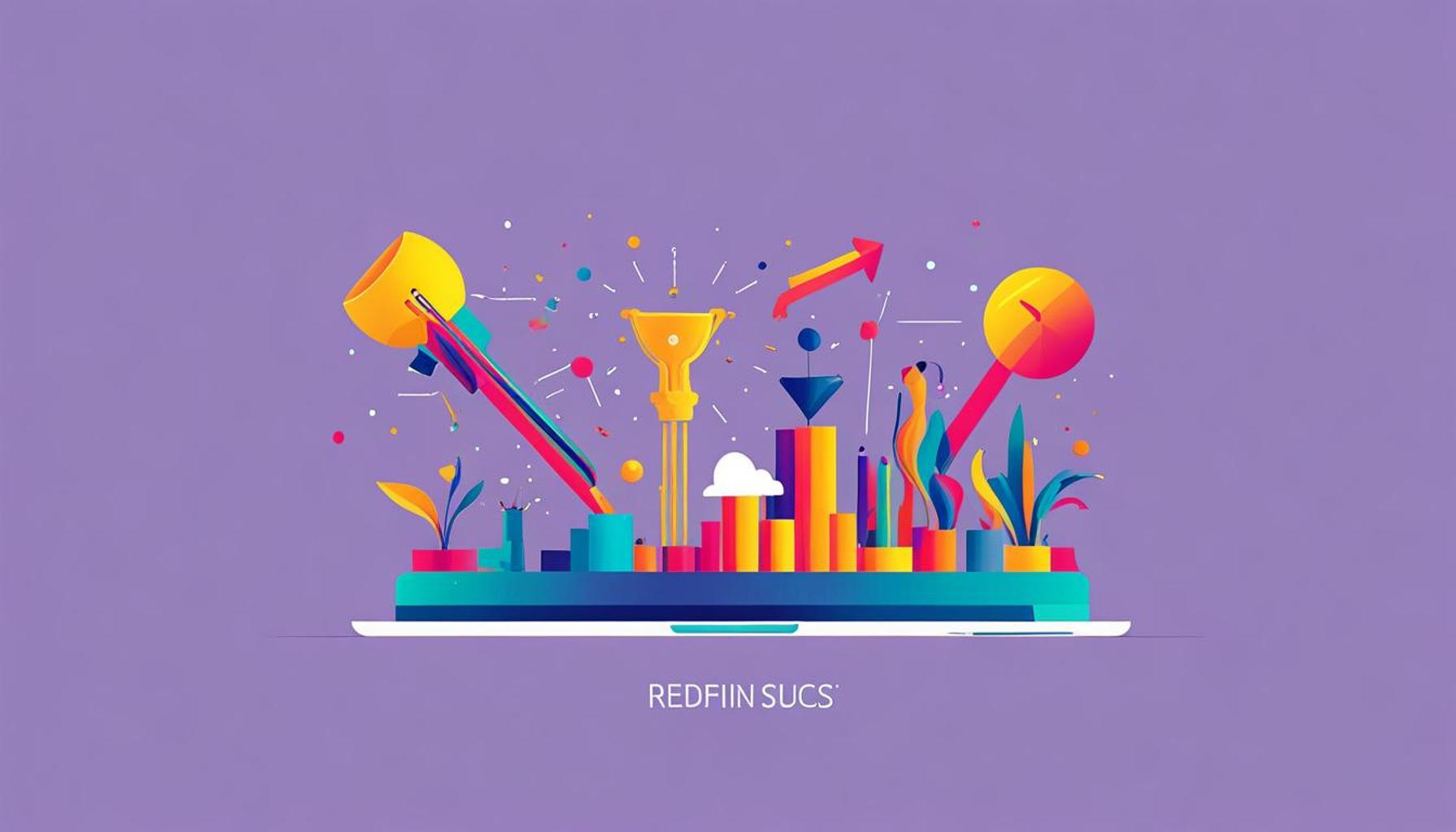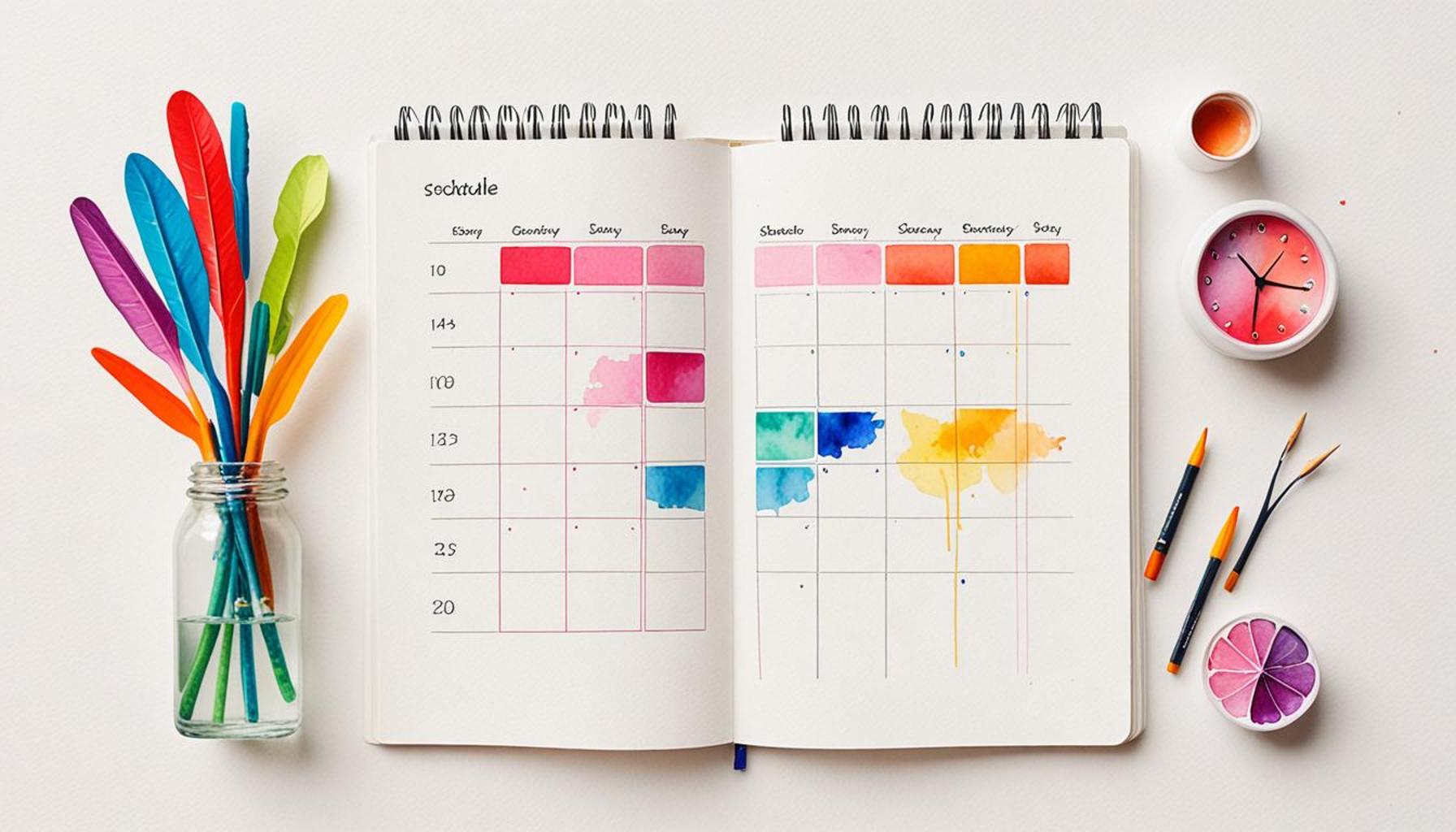Redefining Success: How Minimalism Can Transform Your Work Routine

Understanding Minimalism in the Workplace
In an age defined by incessant notifications and demanding schedules, many professionals struggle to keep pace, often becoming ensnared in cycles of stress and decreased productivity. The overwhelming burden of multitasking can lead to burnout, a condition that plagues many workers across various industries. In response, an emerging paradigm in workplace culture advocates for a turn towards minimalism. This shift not only promotes efficiency but also enhances overall well-being.
The Power of Prioritization
One of the primary tenets of minimalism is the ability to focus on what matters. In a world filled with distractions—from emails and instant messages to endless meetings—deciding which tasks are truly essential can dramatically streamline workflow. For instance, techniques such as the Eisenhower Matrix can help professionals distinguish between what is urgent and what is important, allowing them to allocate their time effectively.
Creating a Calm Environment
The aesthetic and psychological impacts of a clutter-free workspace cannot be overstated. Research shows that an organized, minimal workspace can significantly reduce anxiety and promote a sense of calm. For example, tech industry giants like Google encourage minimalism in office design, incorporating open spaces and designated quiet areas, which allow employees to recharge and focus. Such environments not only alleviate stress but also foster collaboration and innovation.
Boosting Concentration and Productivity
When distractions are minimized, productivity often sees a dramatic uptick. Fewer interruptions allow for deeper concentration, enabling employees to produce higher quality work in less time. A 2021 study from the American Psychological Association revealed that teams working in minimalist settings reported a 23% increase in productivity compared to those in more traditional workspace designs. Techniques such as time-blocking or the Pomodoro Technique further enhance this focus, allowing professionals to work in concentrated bursts followed by short breaks.

The Creative Advantage
Beyond enhancing focus and reducing stress, minimalism actively promotes creativity. A simplified work environment encourages individuals to think outside the box and innovate. When their physical space is uncluttered, the mind can roam freely, exploring new ideas and solutions. For example, many artists and creators embrace minimalism as a way to invite inspiration and spark the creative process. Companies that invest in minimalist design often find that this aesthetic translates into a more innovative and agile workforce.
Redefining Success through Minimalism
As the minimalist movement gains traction among professionals in the United States, many are reevaluating their definitions of success. No longer solely tied to long hours and relentless ambition, success can now encompass personal fulfillment, work-life balance, and a sense of purpose. Embracing minimalism could help individuals articulate a clearer vision of what they truly want from their careers, leading to a more satisfying work experience. By making space for what truly matters, professionals can foster an environment ripe for achieving personal and professional growth.
In conclusion, minimalism offers a fresh lens through which to view the modern work experience. By simplifying tasks, reducing clutter, and fostering creativity, individuals can transform not only their productivity but also their overall job satisfaction. Preparing to embrace minimalism may just be the key to redefining success in today’s dynamic work landscape.
DISCOVER MORE: Click here to enhance your time management skills
Embracing Minimalist Principles in Everyday Tasks
To fully harness the power of minimalism in the workplace, it is crucial to start by integrating minimalist principles into daily tasks and workflows. This approach entails simplifying processes, cutting out unnecessary elements, and focusing on what brings true value to your work life. The result is a more effective routine that aligns with the core tenets of minimalism—efficiency, purpose, and clarity.
Streamlining Processes for Greater Efficiency
Streamlining tasks is an essential step in cultivating a minimalist work routine. By evaluating everyday processes, professionals can identify areas where redundancies exist and where time is wasted. Consider implementing simple tools and methodologies to declutter your workflow:
- Automation: Utilize tools that automate repetitive tasks, such as scheduling software or email filters, to save time and cognitive energy.
- Batch Processing: Group similar tasks together to minimize context switching, allowing for a more focused approach to different responsibilities.
- Regular Reviews: Consistently review your workflow to eliminate outdated practices or tasks that no longer serve your goals. This self-reflection encourages continued efficiency.
These practices, inspired by minimalism, can cut through workload clutter and pave the way for simpler, more productive workdays. As a result, employees may find they have more time to focus on high-priority projects that drive personal and career growth.
Fostering a Mindful Approach to Work
Mindfulness in the workplace is another invaluable aspect of minimalism. By cultivating awareness of how we allocate our energy and time, we can make more intentional decisions that align with our overall goals. Mindfulness practices, such as meditation or brief moments of reflection throughout the day, can enhance clarity and focus.
Incorporating mindfulness into daily routines might look like:
- Morning Rituals: Start the day with a set routine that includes time for quiet reflection, goal-setting, and planning.
- Mindful Breaks: Take short breaks to recharge, focusing on breathing or stretching, which can help reset your mind and promote productivity.
- Intentional Meetings: Evaluate the necessity of each meeting by ensuring they have a clear agenda and outcome, effectively reducing time spent in unproductive gatherings.
By embracing mindfulness, professionals can redefine how they interact with their work, leading to a greater sense of satisfaction and accomplishment. In combining these practices with the minimalist mindset, workers may discover renewed energy and vitality in both their tasks and overall job performance.
Connecting Minimalism and Team Dynamics
Minimalism extends beyond individual work habits; it can also reshape the dynamics within teams. By fostering collaboration through a shared minimalist perspective, teams can cultivate a more supportive and focused work environment. This unified approach encourages:
- Open Communication: Clear and concise communication reduces misunderstandings and enhances collaborative efforts among team members.
- Shared Goals: Establishing common objectives fosters a sense of purpose that unites the team, increasing motivation to achieve those goals.
- Adaptability: Minimalist teams are often more agile, easily adjusting their focus and methodologies in response to shifting priorities or challenges.
This collaborative component of minimalism not only improves team dynamics but also enhances overall productivity, as members work together with clarity and intention. By promoting a minimalist culture, organizations can redefine success as a collective effort rather than merely individual achievement.
Embracing a Minimalist Mindset in the Workplace
As we delve deeper into the realm of minimalism, it’s crucial to understand how adopting a minimalist mindset can significantly enhance your productivity and overall work routine. Minimalism is not simply about decluttering physical spaces; it’s a holistic approach that prioritizes quality over quantity, leading to more intentional choices in both work and life.A minimalistic workspace encourages focus and creativity, acting as a blank canvas that allows ideas to flourish without the clutter of distractions. By simplifying your environment, you free your mind to engage with the tasks that matter most, fostering a more efficient workflow. Studies have shown that environments rich in simplicity can reduce cognitive overload, thereby enhancing decision-making and diminishing stress levels.Moreover, minimalism advocates for the elimination of unnecessary tasks and responsibilities. This can involve recognizing the projects that don’t align with your core values, effectively decluttering your to-do list. Such practices lead to a greater sense of accomplishment as you concentrate your efforts on endeavors that promote personal growth and professional excellence.By integrating the philosophy of minimalism into your work routine, you can cultivate a more meaningful and productive professional life. Adopting this approach not only enhances your performance but also enables a deeper understanding of what truly defines success for you personally. Instead of chasing constant accumulation—be it tasks, meetings, or even material possessions—minimalism invites you to redefine success in terms of balance, fulfillment, and clarity.
Table of Advantages
| Advantages | Key Features |
|---|---|
| Enhanced Focus | Minimizing distractions leads to improved concentration on critical tasks. |
| Increased Creativity | A simpler environment stimulates innovative thinking and problem-solving. |
| Stress Reduction | Eliminating unnecessary tasks and clutter diminishes anxiety levels, resulting in better productivity. |
| Meaningful Success | Focusing on what truly matters allows individuals to redefine and achieve personal success. |
By incorporating minimalism into your professional life, you’re not only transforming your workspace but also setting the stage for sustainable success. Through focus, creativity, and reduced stress, minimalism paves the way for a fulfilling career marked by intentionality and clarity.
DON’T MISS: Click here to streamline your digital life
Cultivating a Minimalist Workspace
The physical workspace plays a pivotal role in how we engage with our tasks and responsibilities. Embracing a minimalist workspace can significantly enhance not only productivity but also mental clarity. A clutter-free environment has been linked to reduced stress and increased focus, allowing individuals to zero in on their core goals. The principles of minimalism encourage the removal of distractions and unnecessary elements, leading to a space that promotes efficiency and creativity.
Designing for Focus and Functionality
When organizing your workspace, start by considering how each element contributes to your work. Ask yourself: Does this item add value? If the answer is no, it may be time to let it go. Effective minimalism involves making conscious choices about your surroundings:
- Personalized Essentials: Keep only the tools and materials that are essential for your work. This might include a computer, a notebook, or a few pens, but eliminate anything extraneous that doesn’t serve your current role.
- Ergonomic Design: Utilize furniture that promotes comfort and posture. A well-designed workspace can help reduce physical stress, allowing for longer periods of focused work.
- Natural Elements: Incorporating plants or windows that provide natural light can improve mood and create a more serene environment. Nature has a calming effect that can enhance overall productivity.
In creating a minimalist workspace, you encourage a culture of focus and engagement that translates to better work outcomes. The visual simplicity can help streamline thought processes and foster innovative ideas, critical components of success in today’s fast-paced workplace.
Time Management through Minimalist Practices
Minimalism also has profound implications for how we manage our time. The notion of minimalism encourages us to look beyond conventional methods of working and focus on time management strategies that truly contribute to our well-being and productivity.
One effective strategy is the Pomodoro Technique, where work is divided into intervals, traditionally 25 minutes in length, followed by short breaks. This technique promotes concentrated work periods while reinforcing the importance of rest. Furthermore, combining this with:
- Prioritization: Identify tasks that matter most each day and focus solely on those, neglecting distractions that do not contribute to your immediate objectives.
- Elimination of Multitasking: Instead of juggling multiple responsibilities at once, commit to one task at a time to enhance quality and efficiency.
- Setting Boundaries: Define time slots for work, breaks, and personal time. This structure helps maintain work-life balance, which is often lost in the hustle of modern work culture.
By integrating these minimalist time management practices, individuals can navigate their workdays with intention, reducing overwhelm and enhancing productivity.
The Transformative Power of Reflective Practices
Incorporating reflective practices within a minimalist framework is another profound way to redefine success. Taking the time to evaluate your progress allows you to reflect on what works, what does not, and how you can continuously improve.
Journal writing, for instance, can be a powerful tool in this transformative journey. Documenting daily accomplishments, challenges, and emotions provides clarity on your work-related emotions and fosters personal growth. Other reflective practices could include:
- End-of-Day Reviews: Spend the last few minutes of your workday reflecting on what you achieved and planning for the next day.
- Feedback Loops: Encourage regular feedback from peers or supervisors to gain insights into your work habits and how they affect team dynamics.
- Vision Setting: Regularly revisit and update your career and personal goals to ensure they remain aligned with your current values and aspirations.
These reflective practices not only support minimalism but can also lead to a deeper understanding of individual motivations, thus driving a more meaningful and successful work life.
DISCOVER MORE: Click here to learn decluttering techniques
Conclusion
In a world where success is often measured by the volume of tasks completed and the constant pursuit of more, adopting a minimalist approach can be revolutionary. By redefining success through simplicity and focus, individuals can cultivate a work routine that emphasizes quality over quantity. The transformation begins with a thoughtfully designed workplace that minimizes distractions, allowing for deeper engagement with core tasks. With a strong foundation set, the incorporation of minimalist time management techniques—such as the Pomodoro Technique and prioritization—creates a rhythm that balances productivity with well-being.
Moreover, the practice of reflection serves as a crucial element in this transformation. Regularly assessing achievements and recalibrating goals not only fosters growth but also aligns one’s work with personal values. Such practices facilitate a deeper understanding of what success truly means, encouraging an ongoing dialogue with oneself about aspirations and motivations. As you embrace the principles of minimalism, you may discover that true accomplishment stems not from an endless to-do list, but from deliberate, meaningful actions that resonate with your purpose.
As you reflect on your own work routine, consider how minimalism could redefine your path to success. Could it mean prioritizing essential tasks, redesigning your workspace, or dedicating time for reflection? The answers may pave the way to a more fulfilling, productive, and successful career. In the end, success is not just about what you achieve; it’s about how you achieve it—with clarity, intention, and a sense of personal fulfillment.



